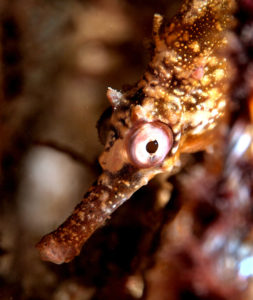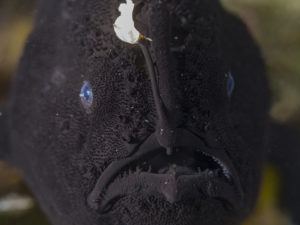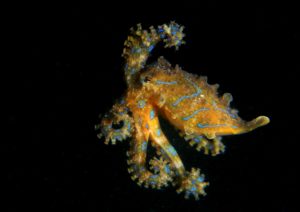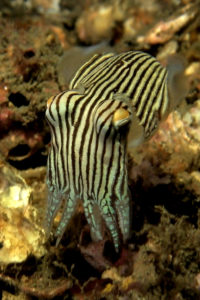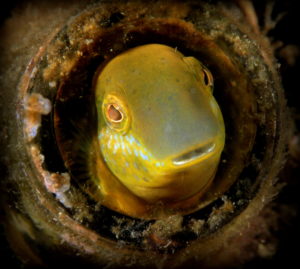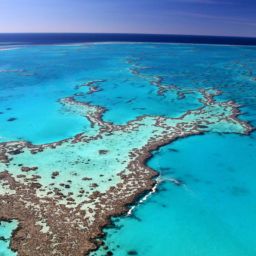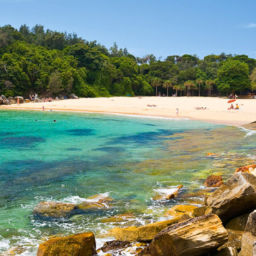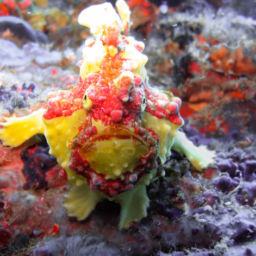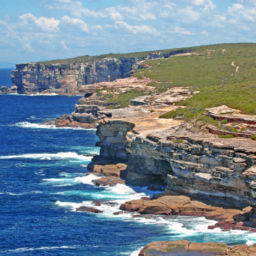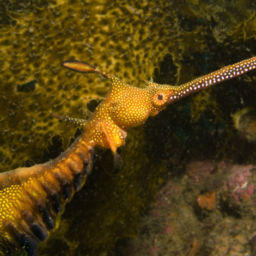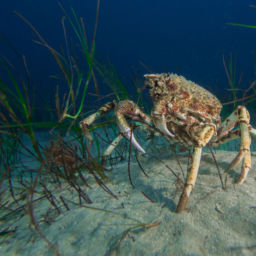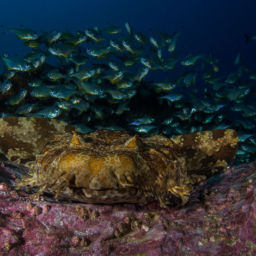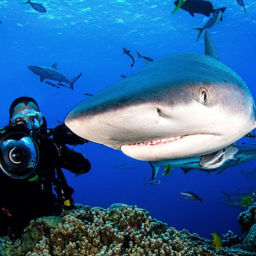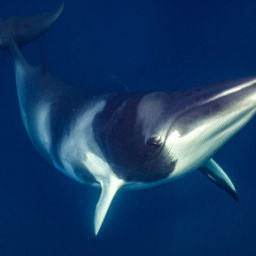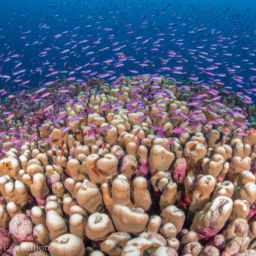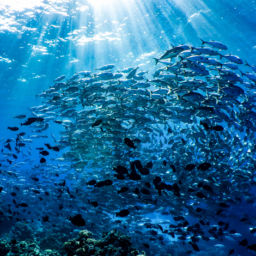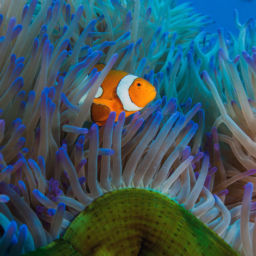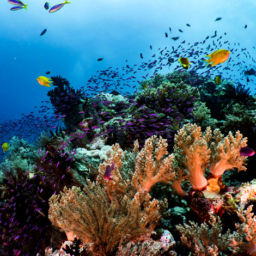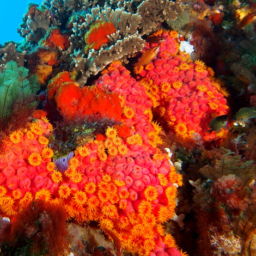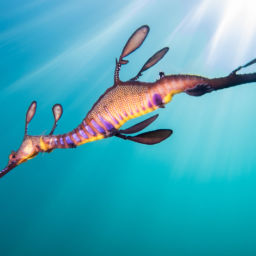There is more to Sydney Harbor than the spectacular Sydney Opera House and bustle of the Harbor Bridge. With a convoluted trail of channels, inlets, bays and islands, Sydney Harbor has a huge variety of underwater habitats, making it one of the world’s most biodiverse harbors. Shallow bays make perfect homes for the cryptic, weird and wonderful animals that macro enthusiasts love so well. Here are just a few of the many critters that make macro diving in Sydney Harbor special.
 White’s Seahorse
White’s Seahorse
Also called the New Holland seahorse or Sydney seahorse, the White’s seahorse is the most common in Sydney. It’s also one of the easiest critters to find, growing to around 8 inches long (20 cm). Like other seahorses, the male of the species gets pregnant. The female deposits her eggs into his brood pouch, where they grow until they are perfect miniatures of their parents. As soon as the male has given birth to hundreds of young, the female comes back, ready to start all over again. This role reversal allows the female to generate more eggs while the male is incubating the last batch, so they are effectively sharing the load.
 Frogfish
Frogfish
Well-loved, wacky-looking frogfish are experts in camouflage. They blend in seamlessly with their surroundings, with colors ranging the spectrum based on where they live. A specially adapted fishing lure resembles a worm or fish. They use it to tempt prey within striking range and then hit with lightning speed, sometimes swallowing prey even bigger than they are. When they’re not using their fishing tackle, it remains neatly tucked against their head. They are not easy to spot, but seeing a grumpy frogfish staring back at you during a dive is always a thrill.
 Southern Blue-ringed Octopus
Southern Blue-ringed Octopus
The southern blue-ringed octopus has neon blue rings along its tentacles and blue lines on its body that flash while it’s hunting or if it feels agitated. At only 2 to 4 inches (5 to 10 cm) long, their diminutive size belies their power. Bacteria in their salivary glands produce extremely powerful venom, which the octopus uses to paralyze its prey. The toxin can paralyze the respiratory muscles in humans within minutes, so if bitten, you must seek immediate medical help. However, fatalities are extremely rare, as the octopuses are timid and tend to flee from humans. It is only when being handled, harassed or squashed that they have bitten. Blue-ringed octopus hide inside small shells during the day, but at night they prowl through the seagrass searching for food, an eerily awesome sight.
 Striped Pajama Squid
Striped Pajama Squid
Cute little striped pajama squid hide in the sand with only their eyes protruding during the day. At night, divers can spot them bouncing around above the sand in their bold apparel. These miniature “squid” are more closely related to the cuttlefish family, and only grow to about 2 inches (5 cm) long. Marine biologists think the stripes serve as a warning sign to predators that the squid would make a terrible snack, as they can secrete potentially venomous slime from their skin.
 Sabretooth Blenny
Sabretooth Blenny
Despite its fearsome name, the sabretooth blenny, also called the bluestriped fangblenny, is not one of Australia’s many dangerous animals. These small fish grow to about 4.7 inches (12 cm), and even when baring their so-called fangs, they’re still quite cute. Living in a harbor surrounded by humans, they have taken to recycling our trash. Blennies love a good hidey-hole, and discarded glass bottles seem to be the perfect fit.
For more information on Sydney Harbor marine life, the threats it faces, and the need to protect it, go to www.sydneymarinepark.org.au.
By guest author Rosie Leaney


